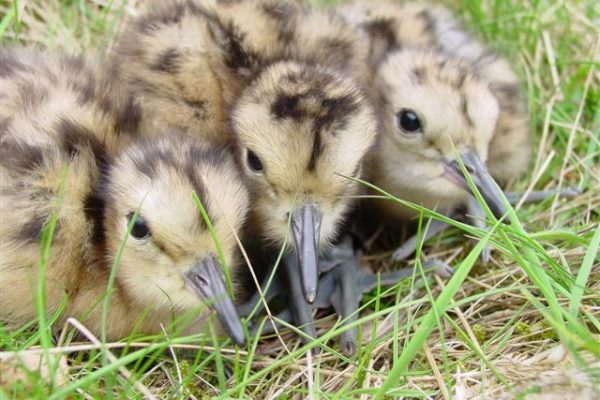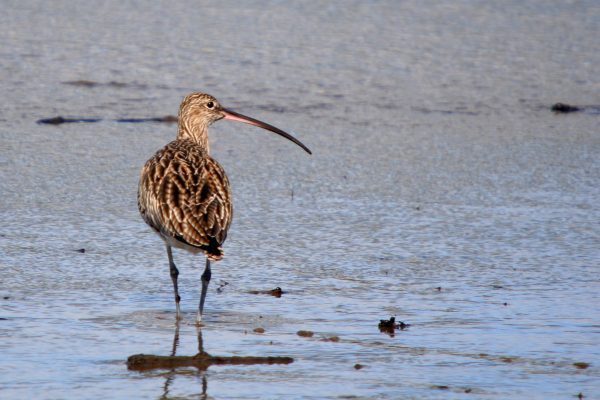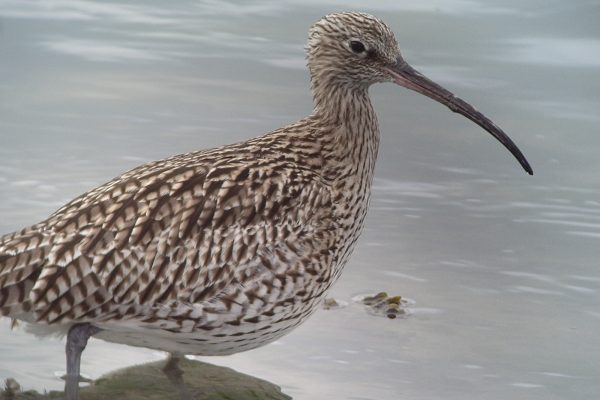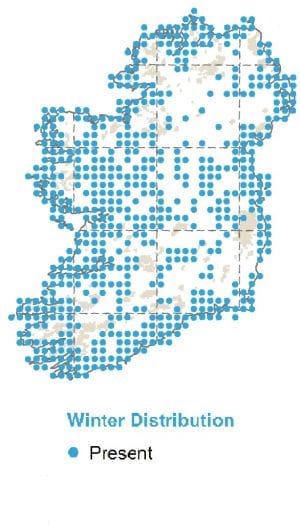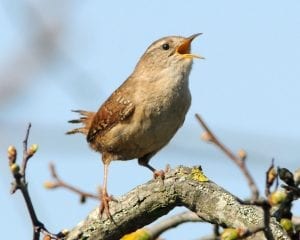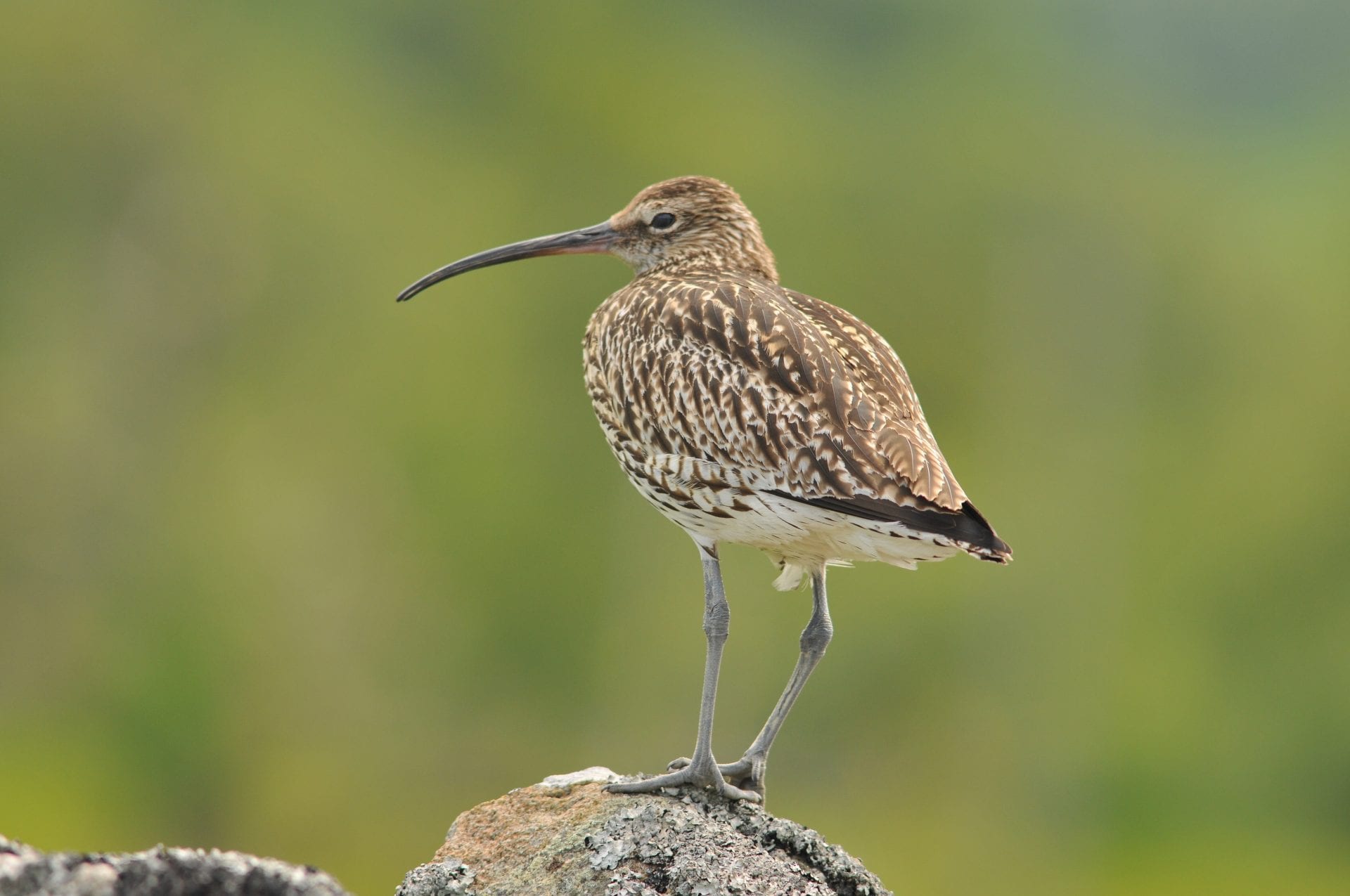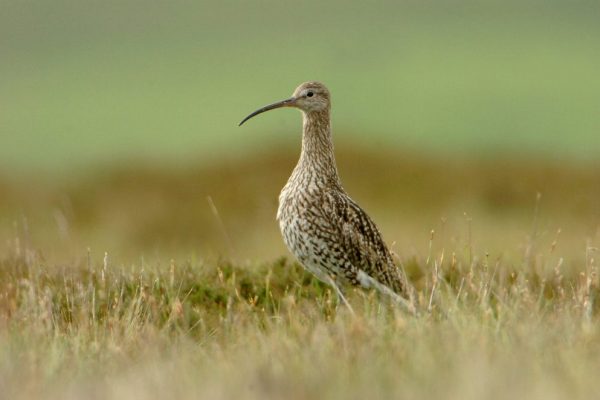
Curlew
| Irish Name: | Crotach |
| Scientific name: | Numenius arquata |
| Bird Family: | Waders |
red
Conservation status
Conservation status
Status
Winter visitor to wetlands throughout Ireland, as well as breeding in small numbers in floodplains and boglands. Numbers and range have declined substantially in recent decades. It is likely that increased afforestation and agricultural improvement are responsible for these declines.
Identification
The largest wader - very distinctive with long legs, bulky body, long neck and long decurved bill. Fairly uniform greyish brown, with bold dark streaking all over. Only likely confusion species is the smaller Whimbrel, which occurs in spring and autumn.
Voice
Unmistakable ascending "cur..lee, cur..lee" whistle, or sometimes "cew, cew, cew". Song in breeding season a long, rapid bubbling repetition of a single note.
Diet
They feed mostly on invertebrates, particularly ragworms, crabs and molluscs. They are usually well dispersed across the estuary while feeding, but roost communally, usually along salt marshes and sand banks.
Breeding
Nests on the ground in rough pastures, meadows and heather. Not a common breeder, but found in most parts of the country.
Wintering
Winters in a wide range of wetland habitats (coastal and inland) and other good feeding areas including damp fields. The Irish breeding population is supplemented by Scottish and Scandinavian breeders in winter.
Monitored by
Blog posts about this bird
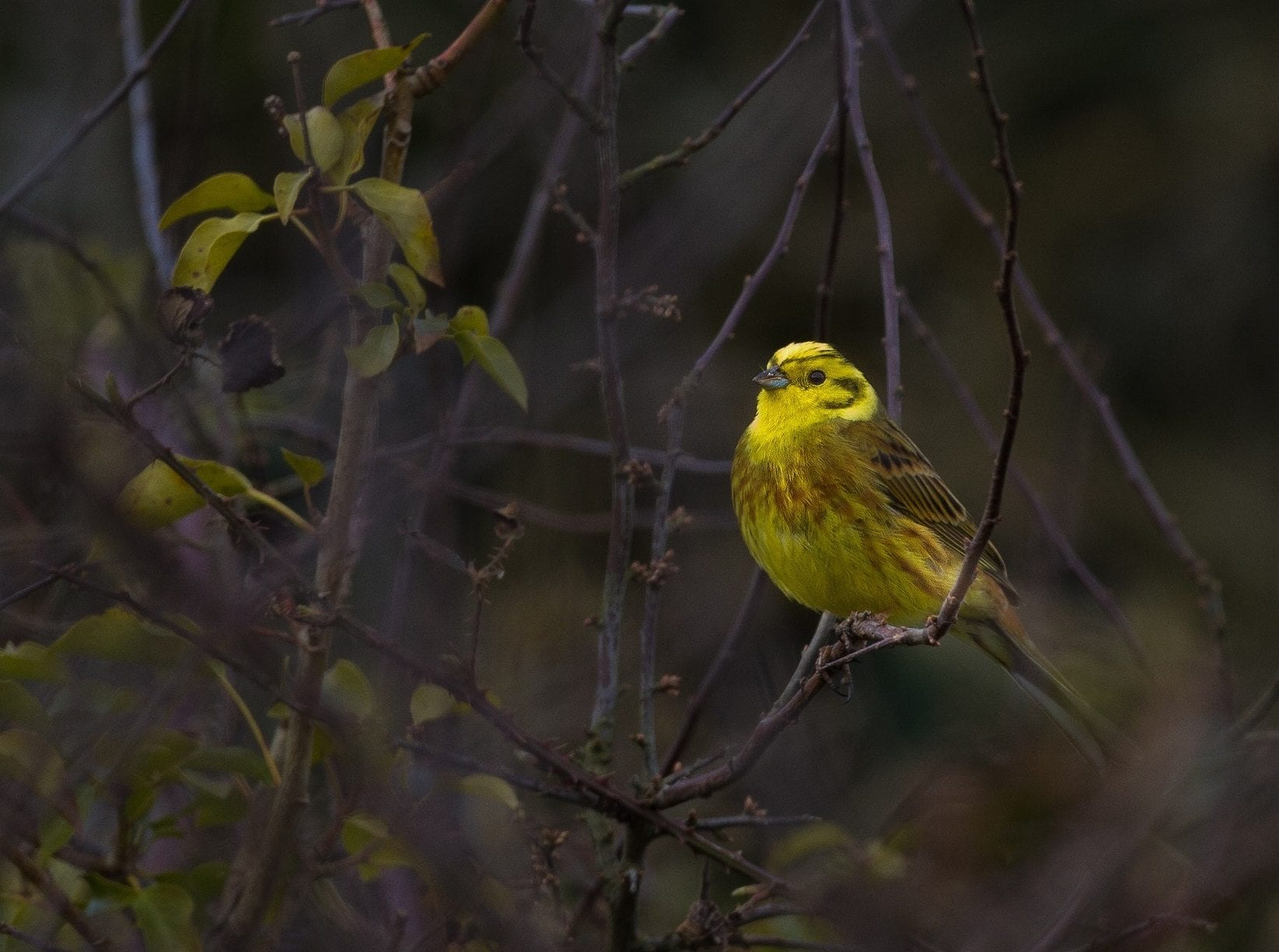
Nesting Season 101 – Hedge-cutting and the Law
Birds in Ireland are facing pressures from all sides, with habitat loss and fragmentation, predation, disturbance and climate change just some of the things they have to contend with. Nesting birds and their young are particularly vulnerable and, while it is vital that we don’t interfere with wild birds at this time, there are some things you can do to support birds during nesting season. One of the easiest ways to do so is to abide by existing laws around hedge-cutting and vegetation burning.
Hedge-cutting and vegetation burning ban
Under the Wildlife Act, it is against the law to cut, burn or otherwise destroy vegetation including hedges between March 1st and August 31st. The purpose of this ban is to prevent the disturbance and destruction of nesting sites of many of our wild bird species.Hedge-cutting
Hedges provide important nesting sites for many wild birds – including Robin, Wren, Blackbird, and Dunnock, to name a few – as well as a bounty of food for a variety of other species. They also offer shelter and safe routes for wildlife to travel along, known as wildlife corridors. Hedges offer numerous benefits to humans including food, natural property boundaries, shelter for crops and livestock, noise reduction and visual appeal. As healthy hedges also sequester and store atmospheric carbon, and help to slow water movement and prevent flooding, they are absolutely vital in mitigating the effects of climate change. The annual ban on hedge-cutting applies to private gardens as much as it does to farms and the wider countryside. While some green-fingered folk may argue that, with a steady hand, they can leave a nest unshaken, the sheer act of getting that close to the hedge and nests within it could be enough for the adult birds to abandon it. Without their parents, the eggs and chicks in the nest have virtually no hope of survival. If they don’t succumb to starvation due to lack of food delivery by an adult bird, they are likely to be victims of predation. 63% of regularly occurring Irish birds are of serious conservation concern, with 26% of them now Red-listed species of conservation concern and 37% Amber-listed species of conservation concern. With the decline in bird populations directly linked to the loss and degradation of habitat, it is important that we do all we can to preserve what remains. You can play your part in this by leaving your hedges alone during the nesting season, and by spreading the word to others.Wren. Photo: Michael Finn.
Vegetation Burning
The Wildlife Act also prohibits the burning of vegetation during the nesting season. This is aimed at protecting our ground-nesting bird species in upland habitats, many of which have seen their populations plummet in recent decades. This includes species such as Curlew, Lapwing, Skylark, Meadow Pipit and Hen Harrier. While burning is not the only cause of the decline of these species, it does pose a significant threat to their breeding success when carried out during the nesting period. But even during the 'open season' for burning, out-of-control fires, can have devastating consequences on habitats sometimes 'melting' peat soils due to the heat and destroying their functions as carbon stores and sinks as well as habitats for wildlife, for years. Illegal fires during the closed period can lead to the destruction of nests and young of these already vulnerable species, as well as the disturbance of breeding adults. Additionally, such burning can damage habitats that are protected in their own right such as Raised Bog and Blanket Bog. In addition to being unique and biodiverse habitats, our bogs serve as carbon sinks, meaning that they play a huge role in mitigating the effects of climate change.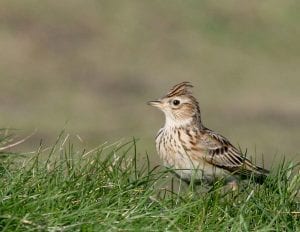
Reporting illegal cutting and burning
Despite the ban on hedge-cutting between March 1st and August 31st, it is possible that you will come across cutting and burning during this period. Indeed, the Wildlife Act does have exemptions which allow hedge-cutting during the closed period, for example, should there be road safety concerns. In saying this, regardless of who is involved, don’t assume that those cutting the hedge have received the green light to do so. It may well be that they are breaking the law. If you witness hedge-cutting or burning in any place or at any time during this period, please report it to the local Gardaí and the National Parks and Wildlife Service (NPWS). You can read the NPWS guidance on reporting Wildlife Crime here and find contact details for your local NPWS Wildlife Ranger here.Enforcement of the Wildlife Act
Efforts to tackle wildlife crime in Ireland have been strengthened in recent times. Forty-three prosecution cases were initiated by NPWS in 2023 for alleged breaches of wildlife legislation, a 39% increase since 2022. Wildlife crimes reported range from the disturbance of bats, illegal hunting, damage to Special Areas of Conservation (SACs), destruction of hedgerows and burning of vegetation within the restricted period, and more. This increase in action against wildlife crime is very much welcomed by us at BirdWatch Ireland. However, there is still work to be done. It is widely known that our wildlife legislation is not as strongly enforced as it could be, and that the initiation of cases and rates of conviction are higher in some locations than others. There are a number of reasons for this including a general lack of training and resources in the area of wildlife crime in both the National Parks and Wildlife Service (NPWS) and An Garda Siochána, and difficulty in gathering sufficient evidence on certain forms of wildlife crime. With this in mind, if you witness any other form of wildlife crime, or simply are worried about the situation for wildlife in this country, we would encourage you to also contact your local and national elected representatives to voice your concerns.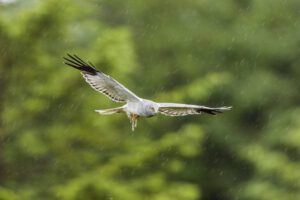
Early and Late Nesting Birds
While the ban on cutting and burning begins in March and will be lifted at the beginning of September, we strongly encourage you to leave your hedges for longer than the closed period. Unlike humans, birds don’t use calendars to determine their schedules! As the subject is understudied here, much of what we know about nesting is derived from UK data. However, owing to our milder climate, we likely have a potentially earlier onset to the nesting season in Ireland. Climate change has also caused a shift in birds' annual cycles, with milder temperatures leading some species to nest earlier in the year. We do have evidence of late nesters including the Red-listed Yellowhammer, the species with the latest fledging date. While the current legislation permits hedges to be cut from September 1st, at this time, approximately 5% of Yellowhammers may still have chicks in the nest. Hen Harrier may also still have unfledged chicks in the nest into late September. Until we have data on nest-building periods in Ireland, we advocate for a cautionary approach when it comes to hedgerow management and vegetation burning, particularly during these fringe periods.
Launch of 45th edition of Irish Birds
The status of Greylag Geese in the Republic of Ireland, mapping of farmland bird hotspots and wintering waterbird trends in Ireland are just some of the many topics covered in the latest edition of Irish Birds.
Published in September 2023, the 45th edition of Ireland’s only ornithological journal is now available for purchase from the BirdWatch Ireland shop and would make the perfect gift for anyone with an interest in birds in Ireland and the latest research in the field of ornithology.
The latest edition of Irish Birds includes an overview of site-level and national trends for 35 wintering waterbird species at the 97 Irish Wetland Bird Survey sites. Across all sites analysed between 1994/95 and 2019/2020, Pochard, Scaup, Goldeneye, Golden Plover, Grey Plover and Lapwing showed large declines of over 50%, while Dunlin and Curlew showed moderate declines. 12 species underwent intermediate declines and the remaining 15 species were stable/ increasing. Further research to determine the drivers of these increases and declines is crucial and will help to shape future conservation efforts.
Farmland birds are one of the most threatened species groups in Europe and many studies have highlighted the declines in population and range of farmland birds in Ireland, the UK and across Europe. The declines, which are affecting sub-groups such as breeding waders and other ground-nesting birds in particular, are attributed to habitat loss and fragmentation, agricultural intensification, land drainage, afforestation and increases in predation. Recognising the important role that agri-environment schemes play in protecting and supporting farmland birds, BirdWatch Ireland has developed a series of maps which illustrate Irish hotspots for 28 species, including Curlew, Lapwing and Yellowhammer. These maps and the methods behind them are included and discussed in another paper – ‘Mapping of Farmland Bird Hotspots: a method to assist targeting of agri-environment measures’ – in the latest edition of Irish Birds.
An assessment of the status Greylag Geese in Ireland during the winter from 2017/18 to 2019/20 showed that the Icelandic population has declined by 42% since the previous assessment in 2007/08. This figure coincides with a c. 45% decline in the flyway population over the same period. Despite these population declines, the distribution of Icelandic Greylag Geese has remained unchanged in the Republic of Ireland over the last 10-12 years, with its concentration being in the eastern half of the country. Meanwhile, the feral population of Irish-breeding Greylag Geese is estimated to have increased by between 109 and 147% since 2008. This study, which was conducted by BirdWatch Ireland in collaboration with the National Parks and Wildlife Service (NPWS), can be read in Irish Birds. To conclude, this paper offers recommendations on how monitoring of Greylag Geese can be expanded upon and improved to help to increase our understanding of this species in Ireland.
Another incredibly informative read is a review paper that looks at the status of birds in County Cork. This paper is a summary of the incredibly detailed book, The Birds of County Cork, by Patrick Smiddy, Mark Shorten and Russ Heselden, which provides a comprehensive account of the ecology of all species known to have occurred in Cork from the earliest times to the present.
Notes on topics such as trichomonosis in finch species and nocturnal migration are some of the other interesting things that owners of Irish Birds can delve into.
The journal also includes a book of abstracts from the 2023 Ornithological Research Conference at University College Cork (UCC) and the Irish Rare Birds Report 2021. The latter is published on behalf of the Irish Rare Birds Committee (IRBC) – a group operating under the auspices of BirdWatch Ireland that is responsible for maintaining a list of the birds recorded in the Republic of Ireland, along with “at sea” records. The Irish Ringing Report 2021, which summarises birds ringed and caught in Ireland in 2021, is also included in the latest Irish Birds. There were many unusual discoveries, including a Kingfisher found in Tallaght which was previously sighted in East Sussex earlier in the year. Such long-distance movements of Kingfishers, especially overseas, are rare. There are also numerous examples of birds that reached a high age, including a Great Tit that was just one month shy of the British Trust for Ornithology (BTO) longevity record of 10 years 5 months and 18 days when it was re-trapped in Edenderry in 2021.
As the number one ornithological journal in Ireland, Irish Birds is a necessity for all serious birdwatchers and scientists working in the Irish conservation sector. The 45th edition of Irish Birds is now available from the BirdWatch Ireland shop, both online and in Kilcoole. Should you choose to support BirdWatch Ireland as a key member, you will receive a copy in addition to three copies of our membership magazine, Wings, every year.
Also, for those seeking previous issues, we have plenty of back issues of Irish Birds available at a reduced price. Whether you are keen to complete a collection or simply have a particular interest in a certain year or study, you can contact us to find out more about purchasing back issues.


